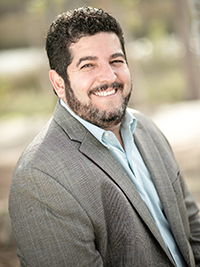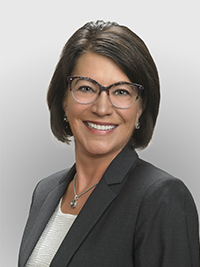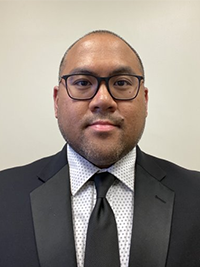AI in healthcare: Boosting efficiency and addressing burnout
Most (90%) healthcare executives say that digital and AI transformation is a top priority, according to McKinsey research. While generative AI may have a number of uses across the healthcare system, its potential to enhance efficiency, effectiveness and alleviate burnout among healthcare professionals may be one of its most valuable uses for reshaping patient care.
For example, 92% of clinicians say that too much time spent on administrative tasks is a major contributor to burnout, according to Accenture. The same study shows that 39% of clinicians do not believe that digital health tools are effectively integrated into their workflows. For healthcare systems, figuring out how to easily integrate AI and digital tools into workflows is an important way to build a stronger, better, more engaged workforce — translating into more efficient and effective patient care.
HFMA and UKG recently gathered several health system leaders to discuss opportunities, challenges and successes in using AI for workforce management.
Has your organization embraced AI in its human capital and workforce management strategies and solutions?
Ashley Allers: We’ve started looking at it. As a small facility, it’s hard to make AI work on a large scale. One of the areas we struggle with is having enough staff in coding. So, we started looking at AI coding solutions. But as a smaller facility, it’s hard to even get a quote because we just don’t have enough volume. So that’s one of the drawbacks. We don’t have the volume and capacity, but we also don’t have the human capital or the people around to hire. We’re kind of stuck in the middle at the moment, but we’d love to embrace it.
Fahd Benjalil: At Sharp Healthcare, we looked at AI for a couple of years and finally made the decision to build our own AI. We call it Sharp AI. In its infancy, it’s not used for medical or clinical use at all right now. It’s primarily used for help with drafting documents or things like that. So, it hasn’t been fully embraced to the capacity that it can be, but we’re slowly trying things. We have a whole team that was dedicated to Sharp AI with a governance committee, and that [group] reviews the use of AI and really understands how and what we want to do with it.
Summer Owen: We are looking at a couple of avenues for leveraging AI. We’re not at the deployment phase yet, but we’re exploring technology and looking for ways to automate workflows and augment our existing staff. It’s not just in the revenue cycle. We’re looking into virtual nursing and ways to extend our clinical staff. We’re an independent community hospital, so we’re not going to be building AI ourselves. We have to think about this strategically and more from a partnership standpoint.
Does your organization have a strategic vision for AI?
Mark Serain: AI is definitely part of our strategic vision, and it will be a focus going forward. We have providers who want to use it. We’re exploring all the ways it can be useful. It helps with efficiencies, and when you’re at a small facility, you have to wear a lot of hats. We’ll continue to probably use AI as safely as we can to do more with less and to keep making things more efficient. Burnout’s a huge thing in healthcare, so it’s important that we look at ways AI can help our workforce. A governance structure is important. We’re currently working through our policy before we go to our [EHR] and start the AI process. You have to have a policy governing its use before you get started.
Allers: I have started using AI to aid in some of my written reports. I use it to help articulate my thoughts, making my work more efficient and manageable, which allows me to focus on other important tasks. Without this support, it would be difficult to keep up with the growing workload, as it shows no signs of slowing down.
Owen: We’re starting to think about AI not as a ‘nice-to-have’ or an auxiliary strategy. It’s baked into all of the other strategies that we’re looking at, and it’s a way to launch those strategies and execute on those strategies. When we look at our strategic plan, particularly for finance, we’re very focused on ‘How can we be the most effective, the most supportive to the organization, and really drive data-based decision making?’ And we see AI as one of those paths to help us get there. There’s more work than any of us can ever do in a day. We have to find a way to extend ourselves, and I think the state of the workforce currently is forcing us to have to look in different avenues to augment our staff.
How are you preparing for the future with AI-powered human capital management or workforce management solutions?
Kaysha Smalls: We haven’t really utilized AI for workforce management although I would have thought such a large organization would be doing that. I think in healthcare, we are so nervous about trying new things when it comes to patient care, and we lose sight of some of the opportunities that are out there because we’re a little more conservative.
We are using AI for managing our accounts receivables, going out to different payer sites and being able to scrub claims to see if they received the claim and where we are with payment. We’ve also used AI to get [pre-certifications] authorized.
I’ve been seeing how other industries are utilizing AI to determine what workforce is needed, and how to manage that workforce. We’ve got a patient census, so we know this is how many patients we have coming in, and maybe we could be utilizing AI to determine the staffing levels we need. I have not gotten there yet, but I would love to be able to see how we can utilize AI in that manner.
Owen: We’re not using it yet for human capital management, but we are in the process of changing out our ERP vendor so we can leverage it in the future. We were with a pretty modern system on the clinical side of the house and now really needed to invest in systems and infrastructure on the back end. So, we’re trying to focus on having those core partners optimized and accessing all of the AI tools that they have available because we can’t build it ourselves. We’re
too small.
Amy Hayes: I know there are larger projects than just the revenue cycle, but for us, we don’t have a large resource pool. So, it’s becoming more important for us to look at what technology is available to augment our staff and redesign their roles to be solvers of the back-end problems. For some, that technology is very exciting; for others, they’re very fearful of losing their jobs or being replaced by a machine. There really has to be that balance and opportunities for staff to learn new skills, so they won’t fear being replaced. That’s what I’ve been thinking through as we’ve started talking about the opportunities we have in coding and billing to automate and be more efficient while avoiding a mass exodus because people are afraid for their jobs.
As you think about the use of AI and the fear factor of automation, are you thinking about roles being reimagined and are the leaders and the staff being involved in that reimagining?
Benjalil: If AI is implemented in the right way, it should not bring fear of replacing one’s job, but the idea of making one’s job easier and more efficient. You’re always going to have the naysayers, and in a world where we have more and more union activities coming around in healthcare, they’re going to use that against us.
Now it’s up to us to reimagine how we’re implementing AI in healthcare and our organizations. I think it’s crucial to start with a pilot process and try different pods in different areas and learn from those before you do a full rollout. The biggest piece to this is proper training.
Serain: There’s a gap in the connectivity between HR, finance and operations. There are some key components, such as labor management, that we need to connect and build a strategy to use AI to improve from a finance perspective. AI can help us with taking data, tracking trends and identifying opportunities. If I input a few graphs on worked hours per unit of clinical service, AI can respond with what areas are not trending in the right direction so we can focus on those clinical service lines and help them to get to labor and productivity targets.
From an operational perspective, we can use AI to look for gaps in staffing so we can identify areas of premium pay and avoid the use of overtime, crisis pay or agencies. From a human resources perspective, we’re looking to provide a better self-service experience for our team members. We could use chatbots and really optimize that space. Finally, we can use AI for position control, helping us quickly close the gap in recruitment by using technology to identify when a position opens up, going through that process to identify candidates and hiring them.
Nanne Finis: I think it becomes a question of how we can use AI to its full capability in the future. We must consider AI as a tool or ‘partner’ to best support care efficiency and effectiveness. As the technology matures, we will be better able to serve all patients and support better care for all in communities where they live.
The impact of AI will continue to escalate. Patient care in the hospital and in all care settings will experience acceleration of change and improvement as a result. Discussions like this roundtable must continue to occur as the shared lessons learned across organizations can support all entities to use and execute AI in the most appropriate ways.
Where do you see AI in terms of your human capital and workforce management strategy in two years?
Benjalil: I see AI being used as a supplemental tool. I would love to see it help productivity in certain areas, help efficiency in other areas and help remove the huge amount of redundancies we have in healthcare. If the right tool is implemented properly and everybody is trained and using it well, at some point, it will be an intricate part of our daily use, similar to what cell phones are today.
Owen: I think in two years, we’re not going to see mass deployment of AI tools. I think it will be in an augmenting fashion versus replacing. As we become more efficient, our work becomes more engaging. We’re able to do more knowledge work, spend more time with the patient, spend less time on the mundane. That’s what we want to outsource to AI and keep the high-cognitive, high-judgment work for humans. I think in two years, we’re going to have AI deployed in numerous areas, but I don’t think you’re going to see much reduction in staff. I think they’re going to be doing different, higher-level work. And I hope that that improves employee satisfaction and engagement.
Smalls: We have so much work out there. Let’s let AI do all the mundane, repetitive work. I would love to see in two years the ability to forecast productivity based on payer behavior.
Right now, we are very reactive. We have to wait months to hear from payers to find out we’re being underpaid. I’d love to use AI to help us put team members on the claims that are more likely to be denied. And wouldn’t it be nice if AI could help us forecast patient behavior to help us determine the specific times when we will need more nurses, for example. That’ll help us to really figure out how to manage our workforce so that we can be more productive. Those are the things that I am looking forward to with AI.
Serain: Safety is a big focus, and I think AI can help there. AI can result in new, innovative and efficient bed alerts and nursing alerts. For example, if a patient is at risk for falling, AI can enable virtual care by alerting a nurse that a patient’s ready to fall. Additionally, it can be used for medication management for safety with drugs, so it can quickly tell us if a drug should not be given. All of this has to be built around trust. We need to trust that our technology companies are fulfilling their commitment to eliminate security risks.
Conclusion
Although most roundtable participants are just beginning to experiment with AI and its ability to transform healthcare workforce management, many have high hopes for the technology. However, there are common challenges to adopting AI, such as embracing new ways to accomplish tasks, quieting fears of job replacement and finding the right partner — including a partner that is willing to work with small healthcare organizations.
Those who commit to investigating the possibilities of AI and training their workforce to use it appropriately expect to be repaid with increased efficiency, effectiveness and labor cost savings.
As the healthcare workload continues to expand and the labor pool remains squeezed, mastering AI for workforce management can be a promising approach to keeping up with demand, accomplishing tasks more efficiently and improving performance indicators.
Panelists

ASHLEY ALLERS, CRCR, CHFP, MBA
CFO at Van Diest Medical Center in Webster City, Iowa

FAHD BENJALIL, FHFMA, MBA
CFO and COO at Sharp Coronado Hospital in San Diego, Calif.

NANNE FINIS, RN, MS
Chief nurse executive with UKG in Lowell, Mass.

AMY HAYES, MBA, CCS, CCS-P
Senior director of revenue cycle with Great Plains Health in North Platte, Neb.

SUMMER OWEN, MBA, CPPS
CFO at Great Plains Health in North Platte, Neb.

MARK SERAIN FHFMA, MBA, LSSGB
Director for workforce optimization with Endeavor Health in Arlington Heights, Ill.

KAYSHA K. SMALLS, MBA
Executive director of physician revenue cycle at WellStar Health System in Atlanta
About UKG
UKG is the workforce intelligence platform that puts workforce understanding to work. With the world’s largest collection of workforce insights, and people-first AI, our ability to reveal unseen ways to build trust, amplify productivity, and empower talent, is unmatched. It’s this expertise that equips every worker to deliver experiences that set their brand apart — because great organizations know their workforce is their competitive edge. www.UKG.com
This published piece is provided solely for informational purposes. HFMA does not endorse the published material or warrant or guarantee its accuracy. The statements and opinions by participants are those of the participants and not those of HFMA. References to commercial manufacturers, vendors, products, or services that may appear do not constitute endorsements by HFMA






